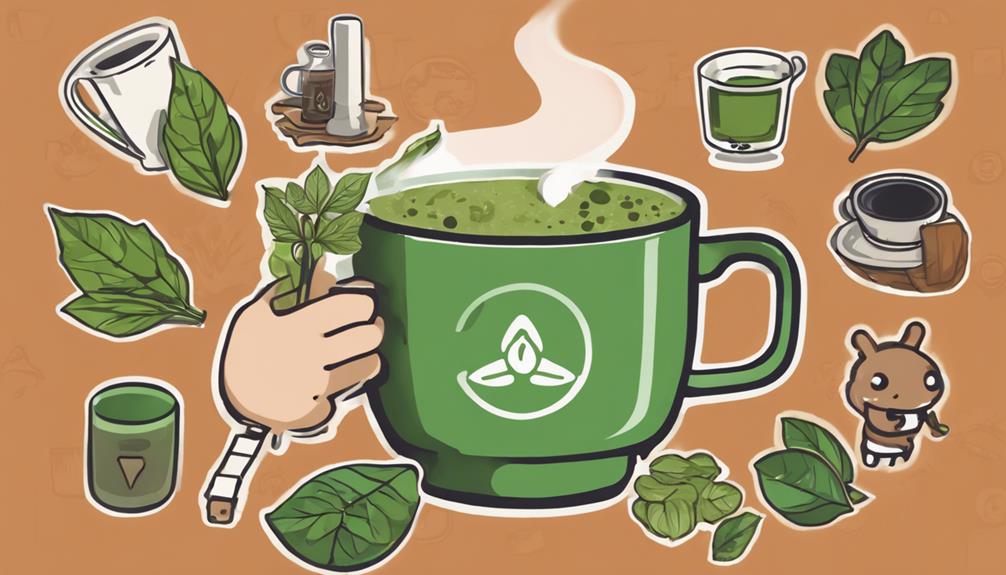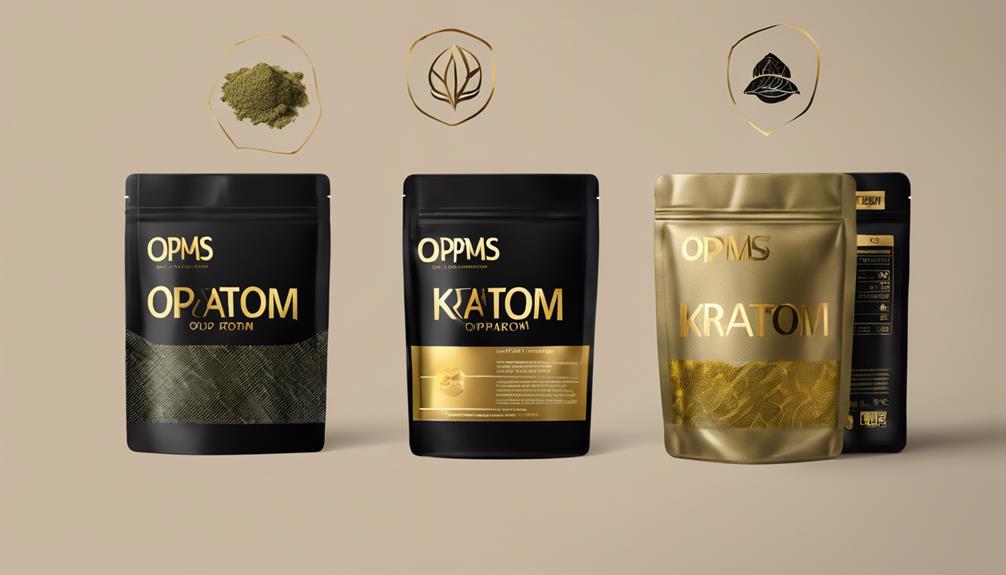Deprecated: mb_convert_encoding(): Handling HTML entities via mbstring is deprecated; use htmlspecialchars, htmlentities, or mb_encode_numericentity/mb_decode_numericentity instead in /home/users/kratomfiles/www/kratomfiles.com/wp-content/plugins/quick-adsense-reloaded/includes/template-functions.php on line 3552
Kratom, scientifically known as Mitragyna speciosa, is a tropical evergreen tree in the coffee family native to Southeast Asia. The leaves of the kratom tree have been used for centuries in traditional medicine to alleviate pain, boost energy, and relieve anxiety. Kratom is typically consumed by chewing the leaves, brewing them into a tea, or grinding them into a powder that can be ingested or added to foods. The active compounds in kratom, called alkaloids, interact with opioid receptors in the brain, producing a range of effects from pain relief to euphoria.
Kratom has gained popularity in Western countries in recent years as an alternative to prescription painkillers and a natural remedy for various ailments. It is available in various forms, including capsules, extracts, and tinctures, making it accessible to a wide range of consumers. Despite its growing popularity, kratom remains a controversial substance due to its potential for abuse and dependence. As such, it is important for individuals considering kratom use to understand its history, different strains, usage methods, benefits, risks, and legal status.
Key Takeaways
- Kratom is a tropical tree native to Southeast Asia, known for its leaves that have psychotropic effects when consumed.
- The history of kratom dates back centuries, with indigenous cultures in Southeast Asia using it for its medicinal and recreational properties.
- There are different strains of kratom, each with unique effects and potency, including red vein, green vein, and white vein varieties.
- Kratom can be consumed in various forms, including as a powder, capsule, or brewed into a tea.
- The benefits of kratom include pain relief, increased energy, and mood enhancement, but it also carries potential risks and side effects such as addiction, nausea, and insomnia.
- Kratom legality and regulations vary by country, with some nations banning its use and others regulating it as a controlled substance.
The History of Kratom
The use of kratom dates back centuries in Southeast Asia, where it has been traditionally used by laborers and farmers to combat fatigue and increase productivity. In Thailand, kratom was historically chewed or brewed into a tea to alleviate pain and boost energy. It was also used as a remedy for diarrhea and as a recreational substance during social gatherings. However, in the early 20th century, the Thai government began to regulate and control the use of kratom due to concerns about its potential for addiction and abuse.
In the United States, kratom has gained attention in recent decades as an alternative to prescription opioids for managing chronic pain and opioid withdrawal symptoms. However, the U.S. Drug Enforcement Administration (DEA) has listed kratom as a “Drug of Concern” and has considered classifying it as a Schedule I controlled substance due to its potential for abuse and dependence. Despite these concerns, advocates of kratom argue that it can be used responsibly and safely when used in moderation. Understanding the historical context of kratom use can provide insight into its traditional applications and potential benefits.
Different Strains of Kratom
Kratom comes in several different strains, each with its own unique properties and effects. The three most common strains of kratom are red vein, green vein, and white vein. Red vein kratom is known for its calming and pain-relieving effects, making it popular among individuals seeking relief from chronic pain or anxiety. Green vein kratom is often described as a middle ground between red and white vein strains, offering a balance of energy and relaxation. White vein kratom is known for its stimulating and mood-enhancing effects, making it a popular choice for individuals seeking an energy boost or increased focus.
In addition to these primary strains, there are also more specialized strains such as Maeng Da and Bali kratom, each with its own unique alkaloid profile and effects. Maeng Da kratom is known for its potent and long-lasting effects, while Bali kratom is prized for its mild and gentle properties. Understanding the differences between these strains can help individuals choose the most suitable option for their specific needs and preferences. It is important to note that individual responses to different strains of kratom can vary, so it may require some experimentation to find the most effective strain for each individual.
How to Use Kratom
| Topic | Information |
|---|---|
| What is Kratom? | Kratom is a tropical tree native to Southeast Asia, known for its leaves which have medicinal properties. |
| Forms of Kratom | Kratom is available in the form of powder, capsules, extracts, and leaves for brewing tea. |
| How to Use Kratom | Kratom can be consumed by brewing it into a tea, swallowing the powder with water, or taking it in capsule form. |
| Effects of Kratom | Kratom can have stimulating or sedative effects depending on the dosage and strain. It may also have pain-relieving and mood-enhancing properties. |
| Usage Precautions | It’s important to use Kratom responsibly and in moderation to avoid potential side effects and dependence. Consult a healthcare professional before use. |
Kratom can be consumed in various ways, depending on personal preferences and desired effects. One common method of consuming kratom is by brewing the leaves into a tea. To make kratom tea, the leaves are steeped in hot water for several minutes before being strained and consumed. This method allows for the gradual release of alkaloids from the leaves, resulting in a milder and longer-lasting effect compared to other methods.
Another popular way to consume kratom is by ingesting it in powder form. Kratom powder can be mixed with water or juice and swallowed, or it can be added to foods such as yogurt or smoothies for easier consumption. Some individuals also choose to encapsulate kratom powder for convenient dosing. Additionally, kratom extracts and tinctures are available for those seeking a more concentrated form of the plant’s active compounds.
It is important to note that the dosage and method of consumption can significantly impact the effects of kratom. Beginners are advised to start with a low dose and gradually increase as needed to avoid potential side effects or tolerance buildup. Understanding how to use kratom safely and effectively is essential for maximizing its benefits while minimizing potential risks.
The Benefits of Kratom
Kratom has been praised for its potential therapeutic benefits, which include pain relief, mood enhancement, increased energy, and anxiety reduction. Many individuals turn to kratom as an alternative to prescription opioids for managing chronic pain due to its natural analgesic properties. Additionally, some users report experiencing improved mood and mental clarity after consuming kratom, making it a popular choice for individuals seeking relief from stress or depression.
Furthermore, kratom has been used by some individuals as a natural energy booster, providing a caffeine-like stimulation without the jitters or crash associated with coffee or energy drinks. This makes it an attractive option for those seeking increased focus and productivity without relying on synthetic stimulants. Additionally, some users have reported experiencing reduced anxiety and improved social interactions after consuming kratom.
While these potential benefits are promising, it is important to note that individual responses to kratom can vary, and more research is needed to fully understand its therapeutic potential. As with any natural remedy or supplement, it is essential to approach kratom use with caution and consult with a healthcare professional before incorporating it into one’s wellness routine.
Potential Risks and Side Effects of Kratom

Despite its potential benefits, kratom also carries certain risks and side effects that should be considered before use. One of the primary concerns associated with kratom is its potential for dependence and addiction. Regular use of kratom can lead to tolerance buildup, requiring higher doses to achieve the desired effects over time. This can increase the risk of developing dependence on the substance and experiencing withdrawal symptoms when discontinuing use.
Additionally, excessive consumption of kratom can lead to adverse effects such as nausea, dizziness, constipation, and insomnia. In some cases, individuals may experience more severe side effects such as seizures or liver damage. It is important to note that these risks are more likely to occur with high doses or prolonged use of kratom.
Furthermore, there have been reports of adulterated or contaminated kratom products in the market, which can pose additional health risks to consumers. To mitigate these risks, it is crucial to purchase kratom from reputable sources that conduct thorough testing and quality control measures.
What are the Benefits of Kratom According to the Ultimate Kratom Guide?
Are you interested in exploring the benefits of kratom? The Ultimate Kratom Guide provides valuable information on how kratom can help with pain relief, anxiety reduction, and increased energy levels. By understanding these benefits, you can make informed decisions about incorporating kratom into your wellness routine.
Kratom Legality and Regulations
The legal status of kratom varies by country and region, with some places banning its sale and consumption while others have regulated its use. In the United States, kratom is legal at the federal level but is banned in several states and municipalities due to concerns about its safety and potential for abuse. The U.S. Food and Drug Administration (FDA) has also issued warnings about the potential dangers of using kratom products.
In Southeast Asia, where kratom is native, its legal status varies by country. In Thailand, for example, kratom was banned in 1943 due to concerns about its impact on opium taxation. However, in 2018, Thailand legalized the use of kratom for medical purposes and research after recognizing its potential therapeutic benefits.
Understanding the legal status of kratom in one’s location is essential for ensuring compliance with local regulations and avoiding potential legal consequences. As the popularity of kratom continues to grow, ongoing research and advocacy efforts are needed to inform evidence-based policies that balance access to this natural remedy with public health considerations.
In conclusion, kratom is a natural botanical with a long history of traditional use in Southeast Asia for its potential therapeutic benefits. While it has gained attention in Western countries as an alternative remedy for pain management and mood enhancement, it also carries certain risks that should be carefully considered before use. By understanding the history of kratom, different strains available, methods of consumption, potential benefits, risks, and legal status, individuals can make informed decisions about incorporating kratom into their wellness routines while prioritizing their health and safety.
If you’re interested in learning more about the legal status of kratom in different states, you should check out the article “Is Kratom Legal in Georgia?” on Kratom Files. This article provides valuable information about the current laws and regulations surrounding kratom in Georgia, helping readers understand the legal landscape of this popular botanical substance. (source)
FAQs
What is Kratom?
Kratom is a tropical tree native to Southeast Asia, belonging to the coffee family. Its leaves have been traditionally used for their medicinal and recreational properties.
How is Kratom consumed?
Kratom leaves can be chewed, brewed into tea, or ground into a powder and ingested. It is also available in the form of capsules, tablets, and extracts.
What are the effects of Kratom?
Kratom can have stimulant effects at low doses and sedative effects at higher doses. It may also have pain-relieving and mood-enhancing properties.
Is Kratom legal?
The legal status of Kratom varies by country and region. In some places, it is legal and regulated, while in others it is banned. It is important to check the local laws before using or purchasing Kratom.
What are the potential risks of using Kratom?
While some people use Kratom safely, it can also have adverse effects such as nausea, vomiting, constipation, and dependence. Long-term use may also lead to liver damage and other health issues.
Can Kratom be addictive?
Yes, Kratom has the potential for addiction and dependence, especially with long-term and high-dose use. It contains compounds that act on the same brain receptors as opioids and can lead to withdrawal symptoms when use is stopped.
Is Kratom a controlled substance?
In some countries, Kratom is classified as a controlled substance due to its potential for abuse and dependence. It is important to be aware of the legal status of Kratom in your area before using or purchasing it.










